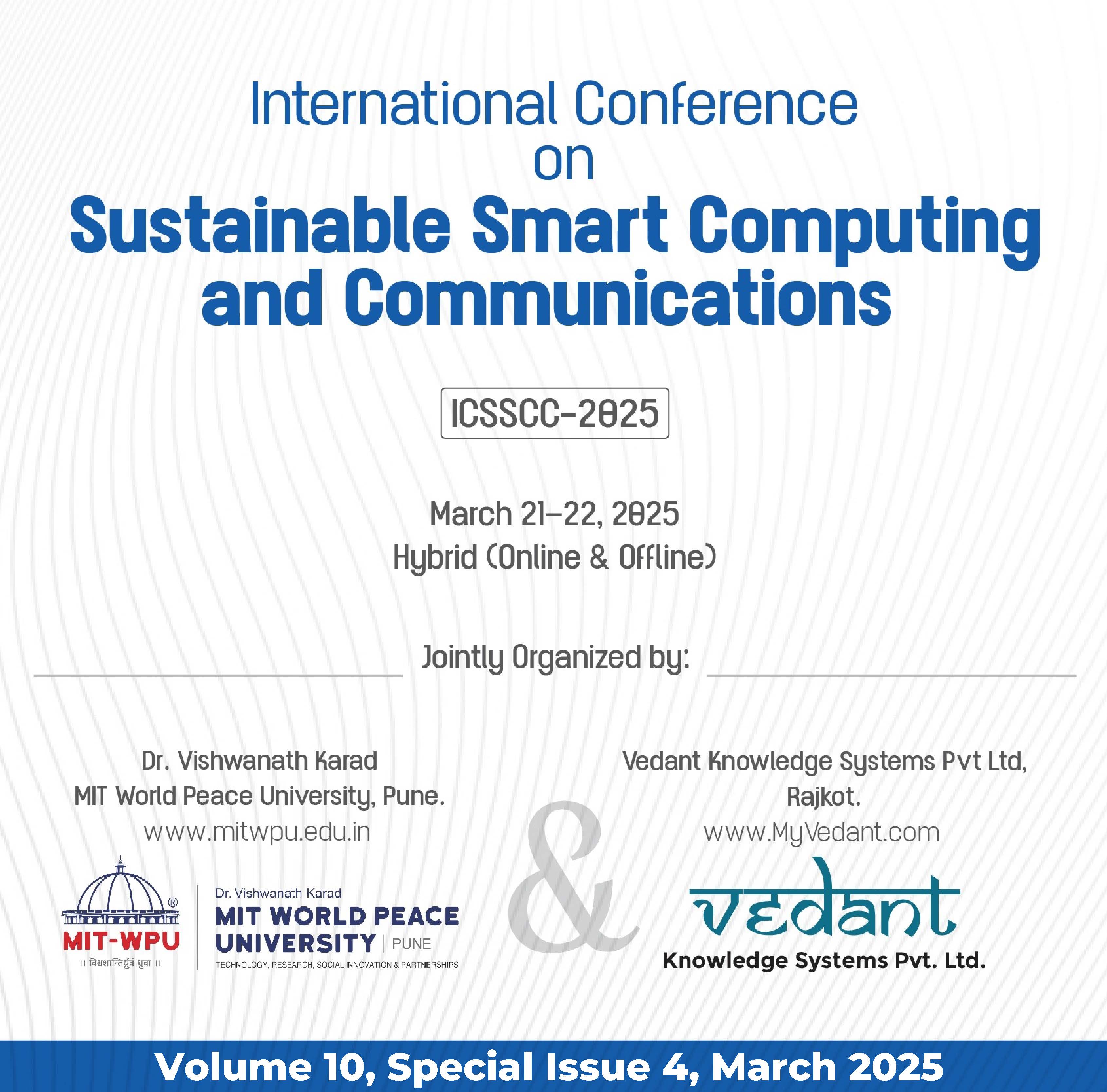Recognition of Hindi Handwritten Text using Deep Learning Technique (RHTDL)
Keywords:
Deep learning, OCR, HTR, CNN, DFFN, MSpropAbstract
Handwritten Text Recognition (HTR) remains a challenging task due to the vast variability in writing styles, slant, and character formations. Deep learning techniques have a significant impact in handwritten text recognition in terms of accuracy. Optical Character Recognition (OCR) has witnessed significant advancements using deep learning techniques. For proposed work we used the Deep Feed Forward Neural network (DFFN) and Convolutional Neural Network (CNN) for Hindi handwritten text recognition. The Root Mean Square Propagation (RMSprop) optimizer for CNN and Adam optimizer with DFFN. Experimental results on a large dataset of handwritten Hindi characters demonstrate proposed method outperforms conventional recognition have efficient and more accurate results. This method provides a robust solution for recognizing complex scripts like Hindi, contributing to the broader scope of handwriting recognition systems.
Downloads
References
Agarwal, S., Jain, A., (2018). Deep convolutional neural network for handwritten Hindi character recognition. Proceedings of the 2018 International Conference on Computing, Communication, and Networking Technologies (ICCCNT), 1-6.
Gupta, V., & Yadav, P. (2022). A hybrid model of CNN and DFFN for Hindi text recognition. International Journal of Machine Learning and Computing, 12(1), 45-53.
Vijaya Reddy and Ravi Babu et.al (2019). Handwritten Hindi Character Recognition using Deep Learning Techniques, International Journal of Computer Sciences and Engineering 7(2):1-7 DOI:10.26438/ijcse/v7i2.17
Rathi, A., & Choudhary, A. (2016). Hybrid model for handwritten Devanagari script recognition using CNN-LSTM. International Journal of Advanced Research in Computer Science, 7(4), 25-30.
Sai Prashanth Duddela (2023). Analysis on Classification of Handwritten Devanagari Characters Using Deep Learning Models, Applications and Techniques in Information Security, 10.1007/978-981-99-2264-2_18, 227-240.
Najam, R., & Faizullah, S. (2023). Analysis of recent deep learning techniques for Arabic handwritten-text OCR and post-OCR correction. Applied Sciences, 13(13), 7568.
AlKendi, Wissam, Gechter, (2024). Advancements and Challenges in Handwritten Text Recognition: A Comprehensive Survey" Journal of Imaging 10, no. 1: 18. https://doi.org/10.3390/jimaging10010018
Moudgil, A., Singh, S., (2023). Handwritten devanagari manuscript characters recognition using capsnet. International Journal of Cognitive Computing in Engineering, 4, 47-54.
J. Memon, M. Sami, (2020). Handwritten Optical Character Recognition (OCR): A Comprehensive Systematic Literature Review (SLR)," in IEEE Access, vol. 8, pp. 142642-142668, doi: 10.1109/ACCESS.2020.3012542. 1-6.
Verma, A., & Gupta, R. (2019). Robust CNN-based Hindi text recognition from natural images. Proceedings of the 2019 IEEE International Conference on Imaging Systems and Techniques (IST), 68-74.
Dayvid Castro, Byron Leite (2024). An End-to-End Approach for Handwriting Recognition: From Handwritten Text Lines to Complete Pages. Proceedings of the IEEE/CVF Conference on Computer Vision and Pattern Recognition (CVPR) Workshops, pp. 264-273
Bhosle, K., & Musande, V. (2023). Evaluation of deep learning CNN model for recognition of devanagari digit. In Artificial intelligence and applications (Vol. 1, No. 2, pp. 114-118).
Alwagdani, M. S., & Jaha, E. S. (2023). Deep learning-based child handwritten Arabic character recognition and handwriting discrimination. Sensors, 23(15), 6774.
Putra, E. D., Ermatita, E., & Abdiansah, A. (2025). Handwritten Kaganga script classification using deep learning and image fusion. Bulletin of Electrical Engineering and Informatics, 14(2), 1290-1297.
Jindal, A., & Ghosh, R. (2023). An optimized CNN system to recognize handwritten characters in ancient documents in Grantha script. International Journal of Information Technology, 15(4), 1975-1983.
